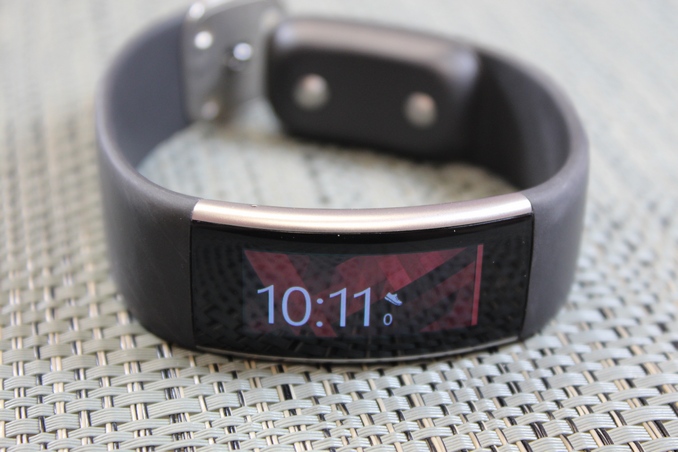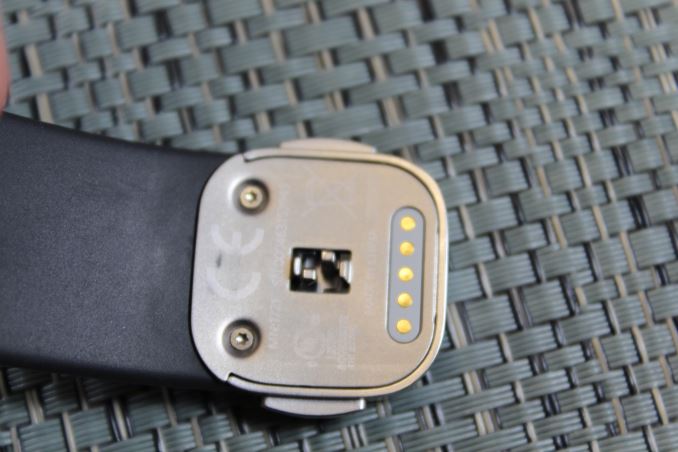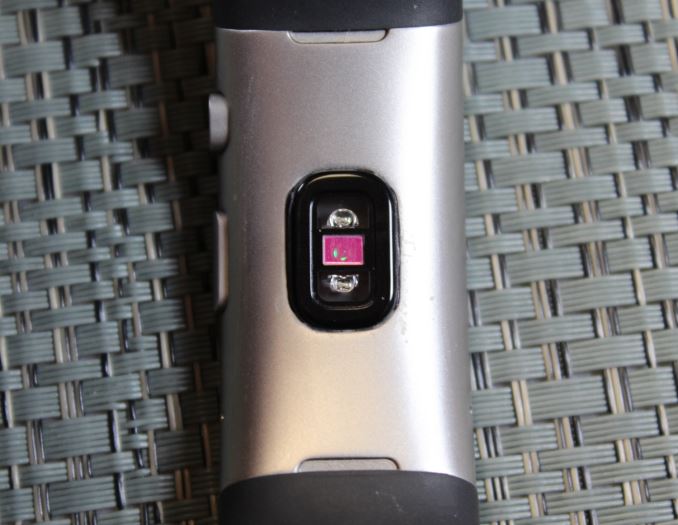The Microsoft Band 2 Review
by Brett Howse on November 30, 2015 8:00 AM EST- Posted in
- Wearables
- Microsoft
- Microsoft Health
- Microsoft Band

At the end of October in 2014, Microsoft surprisingly released a late night press release about a new device they were launching. It was the Microsoft Band, which is a fitness wearable that was a key component of their Microsoft Health service. It was their first real wearable, and it was packed with sensors to track everything from your heart rate to your sleep quality. At the Microsoft devices event in NYC on October 6th, Microsoft announced an updated version of the Band, known as Band 2. Its goal is to provide even more health insights, while being more comfortable and stylish than the original Band.
The first obvious question though is what the Microsoft Band actually is. In a time of everything from step counters to smart watches, where does the Band 2 (which will be called Band from here on out) fit in. Apple has the Apple Watch, Google has Android Wear, and Microsoft has the Band. But it’s not really a smartwatch, although it does do some of the things a smartwatch can do. It’s more than just a fitness band as well - it straddles the line of a 'smart fitness' band. You can do some of the things that a smartwatch can do, but not all, and it can do more things than most fitness bands. Like the Surface Pro 4 is a tablet that can replace your laptop, the Microsoft Band is a fitness band that can replace your smartwatch, except most probably do not have a smartwatch yet.
Design
The Band 2 makes some significant changes from the original, with the goal of a better fit, comfort, and improved ergonomics. It features a curved AMOLED display, which has a resolution of 320x128. This is a big improvement over the original band which had a flat display, and the new one does a much better job of fitting around your wrist than the original Band. Another nice change from the original band is that the entire display and surrounding bezel is now covered by Corning Gorilla Glass, which should alleviate the scratching that occurred on the original Band. Microsoft let me know that complaints of scratching on the display was almost always plastic bezels around the display, so the glass has been extended all the way to the edges as a result. The housing of the Band is now finished in silver metal, and keeps just two buttons on the side for actionable items. The large button in the center is power, and the smaller button on the side is the action button.
Another improvement over the original Band are the straps on the sides. On the first generation, Microsoft actually fitted the two 100 mAh batteries into the straps on the side, which made them kind of stiff, which is no longer the case this time around. In addition, the strap material is now a new material - a thermal plastic elastomer, silicone vulcanite. As with many materials, is comes across as a lot of big words, but the strap is a very smooth silicone rubber, and it doesn’t seem to get affected by sweat and oils on your arm. The clasp itself has not changed much, but it has the same silver finish as the main housing, and the battery has been moved to the lower half of the clasp. The upper clasp features a UV sensor, and the charging pins.
I feel like the design has come a long way from the original Band. The new curved display is the most obvious change, but the other design changes have also improved the overall look and especially feel of the Band on your wrist. The clasp is still fairly large, which might be an issue for some people. It would be nice to see a thinner clasp mechanism on a future version, although as this is where the battery is housed it may not be possible for a while.
| Microsoft Band Specifications | |||
| Microsoft Band 2 (2015) | Microsoft Band (2014) | ||
| Band | Thermal plastic elastomer silicone vulcanite with adjustable-fit clasp | Thermoplastic elastomer with adjustable-fit clasp | |
| Display | 12.8mm x 32mm AMOLED 320 x 128 pixels |
11mm x 33mm TFT 320 x 106 pixels |
|
| Sensors | Optical heart rate sensor 3-axis accelerometer/gyro Gyrometer GPS Ambient light sensor UV sensor Skin temperature sensor Capacitive sensor Galvanic skin response sensor Barometer |
Optical heart rate sensor 3-axis accelerometer/gyro Gyrometer GPS Ambient light sensor UV sensor Skin temperature sensor Capacitive sensor Galvanic skin response sensor |
|
| Additional Technology |
Microphone Haptic vibration Motor |
Microphone Haptic vibration Motor |
|
| Connectivity | Bluetooth 4.0 LE | Bluetooth 4.0 LE | |
| Compatibility | Windows Phone 8.1 Update, with Bluetooth 4.0 iOS 8.1.2 or later: iPhone: 4S, 5, 5C, 5S, 6, 6 Plus Many Android 4.3 – 5.0+ phones with Bluetooth |
Windows Phone 8.1 Update, with Bluetooth 4.0 iOS 7.1 or later: iPhone: 4S, 5, 5C, 5S, 6, 6 Plus Many Android 4.3 – 5.0+ phones with Bluetooth |
|
| Battery | Lithium-Polymer 48 hours | Dual 100mAh Lithium-Ion polymer 48 hours |
|
| Environment | Dust/Water | Dust and splash resistant | Dust and splash resistant |
| Temperature | 14°F to 104°F (-10°C to 40°C) |
14°F to 104°F (-10°C to 40°C) |
|
| Altitude | -300m to +4877m | 1200m | |
| Launch Price | $249 USD | $199 USD | |
The new Band has even added to the sensor total, with a barometer now available, serviced by a small hole in the side of the Band. Due to the holes for the barometer and microphone, the Band is not waterproof, although it is rated as water resistant. Internally, the holes have a fine mesh cloth which is fine enough to not let water through during temporary mild wet weather, but this is not enough protection for immersion such as swimming.
The Band itself is powered by a Cortex M4 processor. One would expect it might run Windows 10 IoT, at least with this version, but they still need a bit more power before they will move it to Windows 10, which is something to look for in the future. The UI is a custom specifically for the Band though, influenced by Windows 10 in its look and feel.













56 Comments
View All Comments
xthetenth - Monday, November 30, 2015 - link
It does automatically track when you sleep even if not prompted to, although of course it isn't necessarily as reliable for tracking how long it takes to start sleeping, and it does note that it was detected rather than manually demarcated.Eagle1848 - Monday, November 30, 2015 - link
I have one of these and you are right, xthetenth, it does automatically detect sleep, but the parameters are looser to prevent accidentally entering sleep mode. I think it's something like 2 hours of not moving along with a couple other indicators, so if you toss and turn a lot (as I do) it won't detect sleep accurately very often. I tried it a few nights when I first got it and I think it detected sleep accurately about 1 night in three or four. Best bet is to manually activate it like you said as it detects everything really well such as time to fall asleep. Automatically detects sleep spot on with near 100% accuracy though if I am somewhere I won't move a lot such as taking a nap on the couch.xthetenth - Monday, November 30, 2015 - link
Yeah, I've had mine detect me going to sleep when I forgot, but I bought it to track sleep, so I've only forgotten once and don't have a decent amount of info on how reliable it is for me. The data when manually activated are quite good though, and match up quite well to what happened as far as I can tell.phoenix_rizzen - Monday, November 30, 2015 - link
Does it allow you to track more than 1 sleep cycle in a day? For example, can you track a 2-hour nap in the middle of the day? Or sleeping for 3-4 hours at night, getting up and doing stuff for an hour or two, and then sleeping for 3-4 hours again? Or is it a binary "sleep on/sleep off" once per day?I've tried several sleep tracking apps on my phone, and so far, none of them support multiple sleep cycles in a day. :( Meaning they don't accurately track the real numbers of hours of sleep I get in a week. Having 2 kids under 5 (one just barely over a year old) makes "sleep" a very fluid concept. :)
pavlindrom - Monday, November 30, 2015 - link
Yes, the band can track as many sessions as you want, and they'll show up on your phone. I got it recently, and have taken naps here and there that I tracked. Now, for naps, it may or may not catch it automatically, if you intend to go to sleep, just let it know, and it'll track it. You can go through all the history on your phone whenever you please. The band will only display basic stats for the last one. I hope this helps.Devo2007 - Monday, November 30, 2015 - link
While the band was the first wearable sold by Microsoft, it technically wasn't Microsoft's first foray into wearable technology. That (dubious?) honor goes to the SPOT watches.Klug4Pres - Monday, November 30, 2015 - link
"Fitness and I have a love/hate relationship"If you have posted real data, it looks as though you are pushing yourself quite hard! To average 159 bpm during 54 and a half minutes is pretty intense.
tipoo - Monday, November 30, 2015 - link
Or strapped it to a dog to look good for the review :Panactoraaron - Monday, November 30, 2015 - link
Any chance you will review the m3 and i7 versions of the surface pro 4? I think many folks are intrigued with the 'reports' of the m3 getting much better battery life than the i5 and the i7 getting much better performance with the Iris graphics. It would make a great read coming from you guys.simard57 - Tuesday, December 1, 2015 - link
And when will the Lumia 950 be reviewed?